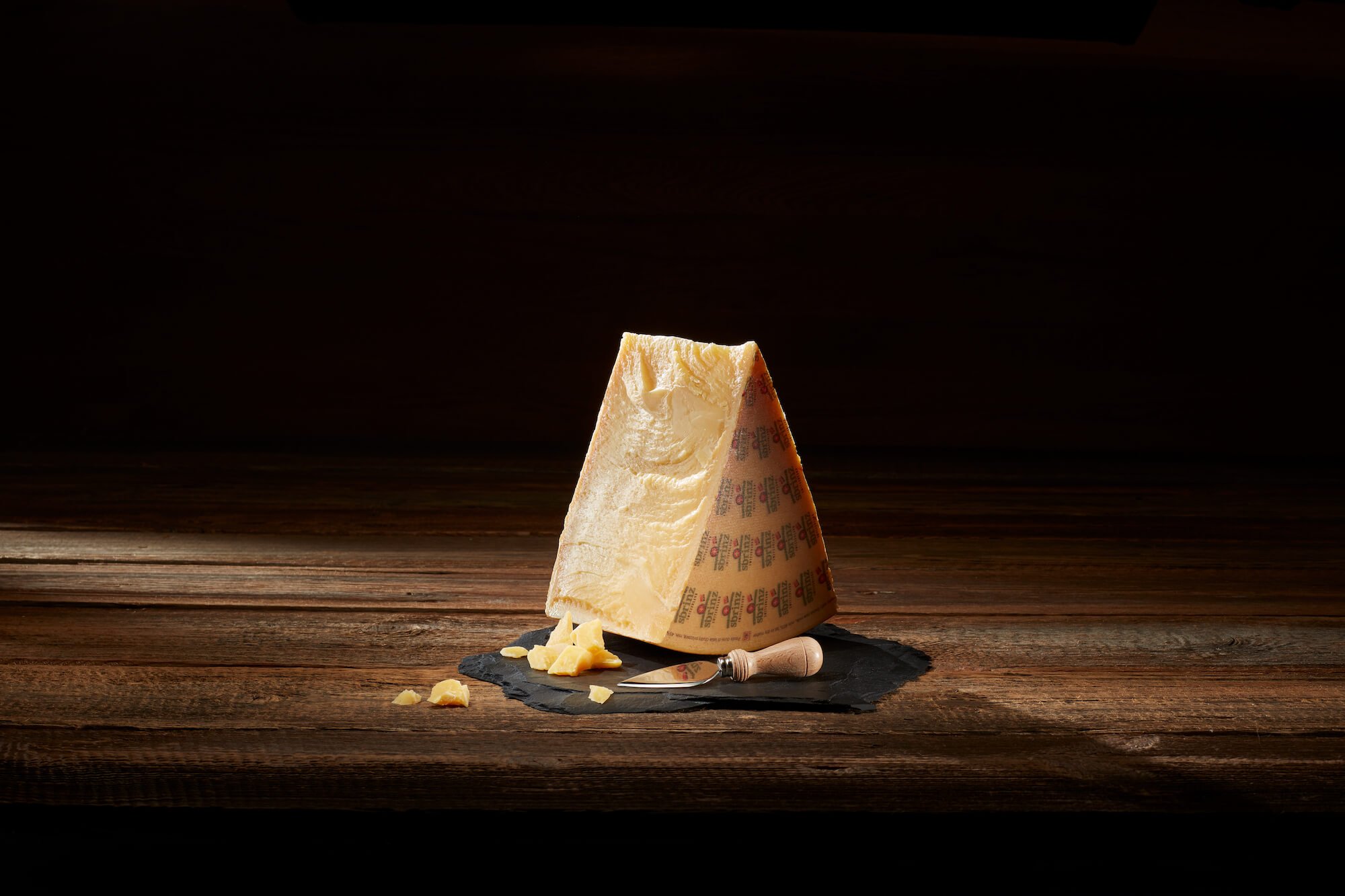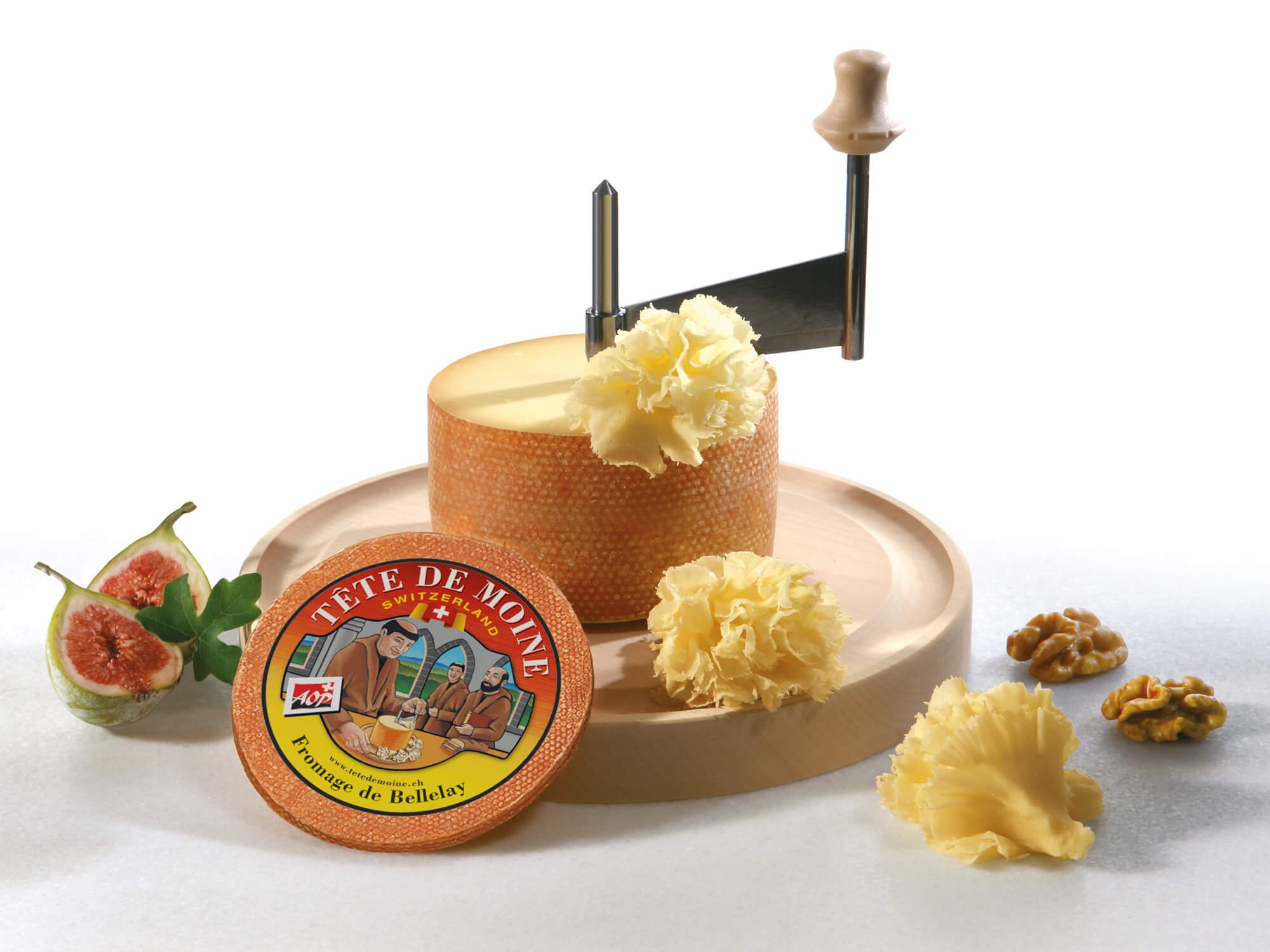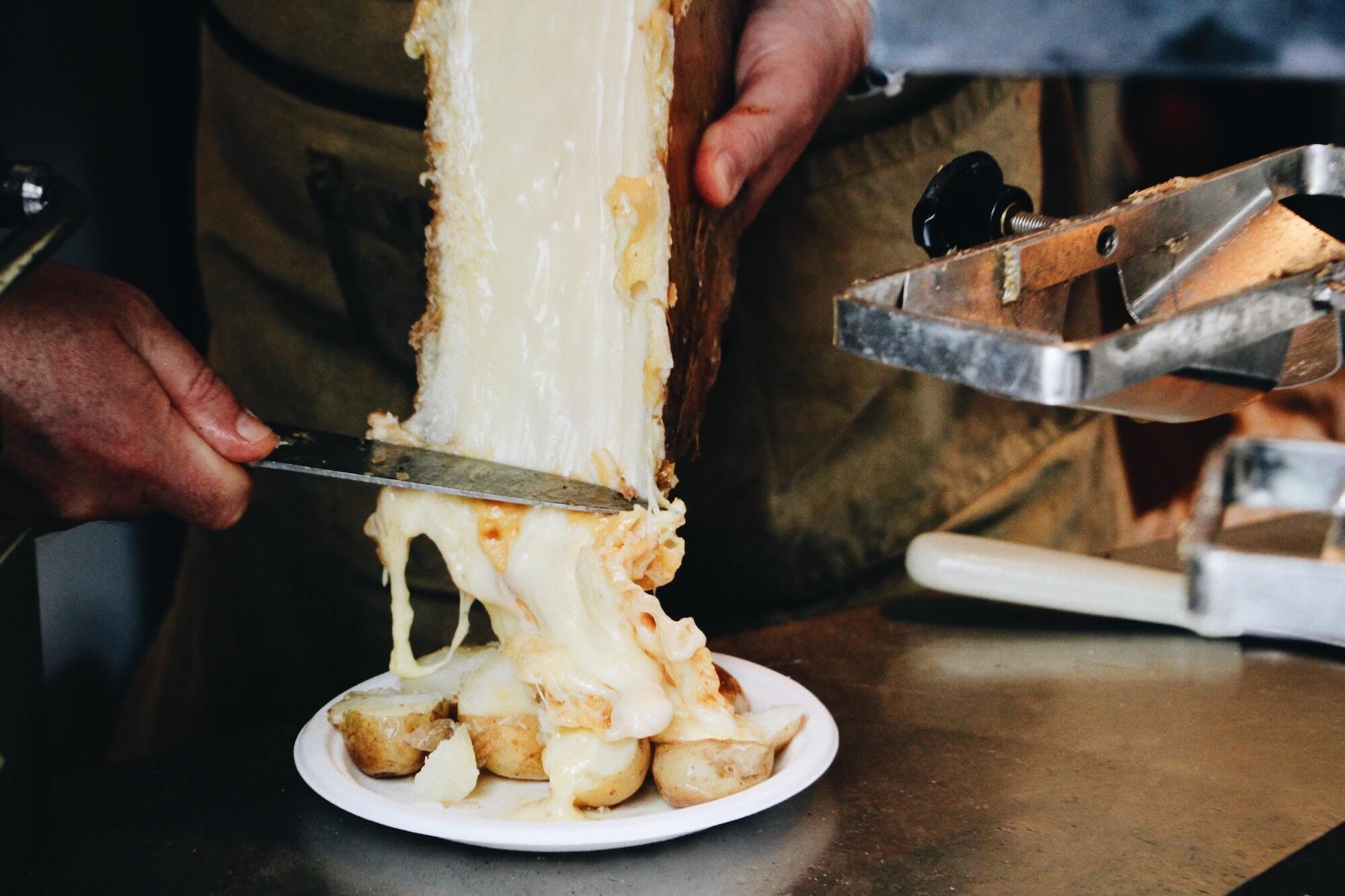7 Swiss Cheeses You Should Know
Mention “Swiss cheese”, and most Americans think of thick, pale yellow slabs of uninteresting cheese with milquetoast flavor and lots of holes adorning their ham sandwiches. Sadly, these mass-produced deli offerings are less-than-respectable approximations of Switzerland’s incredible dairy culture.
Evidence of Switzerland’s cheesemaking dates as far back as 2500 BC when dairy farming was first introduced to the area. Through the centuries, Swiss cheesemaking has evolved from cottage cheese-like styles to the introduction of rennet in the 15th century, leading to the creation of many of the hard cheeses Switzerland is renowned for.
From 1914 until 1999 the cheese industry was dominated by the Cheese Union which controlled all aspects of cheese production, marketing and export. When the organization disbanded cheesemakers felt free to create new cheeses in addition to the more traditional ones. Since that time there has been an explosion of new varieties. Today, there are more than 500 varieties of cheese made each year. Here are 7 Swiss cheeses you need to know.
Emmentaler AOP
"File:Emmental (fromage) 01.jpg" by Coyau is marked withCC BY-SA 3.0.
Named for the Emme Valley in the German-speaking canton of Bern (“tal” means valley in Swiss German), Emmentaler has been made here from raw cow milk since the 12th century. Weighing up to 265 pounds per wheel, Emmentaler’s colossal size comes from the historical practice of taxing dairy farmers according to wheel count, not total weight. It’s also one of the most recognizable cheeses in the world because of its large “eyes” which develop during maturation.
Earning the coveted AOP (appellation d'origine protégée) protected designation in 2000, Emmentaler is offered in eight different expressions of ripeness, ranging from a minimum of four months to more than 14 months. These cheeses aren’t overly salty or sharp in flavor. Instead, deeper flavors of hazelnuts and brown butter come through. Longer-aged wheels will have more intensity and a pleasant, lactic tang on the finish, making it a superb choice for melting into a fondue or topping grilled meats.
Sbrinz Photocredit @Sbrinz Käse GmbH, Switerland
Sbrinz AOP
Considered one of Europe’s oldest cheeses, Sbrinz has been made in central Switzerland for more than two millennia, a descendant of the cheeses made by Celtic ancestors since the 1st century.
Today there are only 42 dairies in central Switzerland making Sbrinz from raw Swiss Brown cow milk. Nearly 160 gallons of milk are used to make each 100-pound wheel. Once formed, the wheels are soaked in brine for 15 days and then aged for at least 16 months.
Sbrinz is made using only full-fat cow’s milk. This fattiness, coupled with extensive aging, helps the cheese achieve a dense paste full of crunchy tyrosine crystals and a remarkably fudgy texture. It’s a superb grating cheese and can be used in all sorts of dishes. From creamy soups and chowders to risotto and schnitzels, the full-bodied and spicy personality of this ancient Swiss cheese is sure to be a welcome addition to your table.
Tête de Moine AOP
Made in the Jura region of western Switzerland for more than 800 years, Tête de Moine AOP was first produced by monks in the village of Bellelay. The original name Fromage de Bellelay was renamed Tête de Moine, literally “monks head”, near the end of the 18th century. Local legend claims the name change came from the tradition of storing the cheeses at the abbey, where each wheel resembled the balding heads of the residents.
Each foil-wrapped wheel weighs approximately two pounds and is typically purchased by the half- or whole wheel. Unlike most other cheeses, Tête de Moine is cut horizontally instead of into wedges. The reason for this unusual portioning? The girolle, a device created in 1982 to help get the most flavor and texture from this particular cheese. The wheel is impaled on a central spike, securing it firmly. Then a handled blade is gently spun across the surface of the cheese, scraping up a thin layer of cheese and rind into a bundle resembling the petals of a flower.
These ‘rosettes’ release the cheese’s intense aromas and flavors. The alpine grasses and herbs eaten by the cows help give the cheese aromas of sweet cream and hazelnuts, with a tangy and nutty flavor. Tête de Moine is an excellent choice for a cheese board, and the bold flavors and texture make it great to cook with. Try it melted over roasted fingerling potatoes, mixed with warm cream and herbs for gnocchi, or topping a burger from the grill.
Le Gruyère AOP
Arguably the most famous Swiss cheese, Le Gruyère AOP is constantly imitated, leading consumers to often mistake the generic, alpine-style cheese found on supermarket shelves for the legendary wheels produced since the early 12th century.
Named for the walled city in the Fribourg canton, authentic Gruyère is made from raw cow milk. Evening milk is skimmed and left overnight to settle, then mixed with the full-fat milk collected in the morning. More than 100 gallons of milk are needed to create a single, 80-pound wheel. Once formed, wheels spend 24 hours in saltwater to help the maturation process begin, then kept in the cheesemaker’s cellar for three months to establish aging. The remaining aging of five to 24 months takes place in special maturing cellars.
The flavors and texture of Gruyère evolve as the wheel matures. Younger versions of six to nine months have a much softer texture and milder flavors, making it a superb melter and the classic choice for French onion soup. Rèserve wheels are matured for more than 10 months, and have more intense, savory flavors which are at their best on a cheese board. Because Gruyère has such a complex personality, it pairs well with a wide range of flavors. Fresh cherries, apricots, hazelnuts, wildflower honey, and even wholegrain mustard are excellent partners for this classic cheese.
Appenzeller
Made in the Appenzellerland region of northeast Switzerland for more than 700 years, the secret to Appezeller’s personality is the herbal brine rubbed on the exterior of the wheel as maturation begins. Kept a secret for centuries, this combination of wine, herbs, spices, and occasionally brandy has a significant influence on the flavor and texture of the cheese. Keeping the recipe a secret has prevented the cheese from qualifying for AOP status.
As with many Swiss cheeses the curds are formed and cut, and then reheated to remove moisture from the solids. Once cooked and pressed, the wheels are kept in maturing caves where they age for 7-12 months. During that time, they are periodically washed with the secret brine recipe. Often, mature wheels will have a thin blueish line just under the rind, a sign the brining was effective.
With an assertive, spicy personality, Appenzeller is one of Switzerland’s boldest cheeses. Full of herbaceous and floral aromas, the flavor is deep and assertive. Intense, savory flavors and a minerally tang are complimented by milky sweetness, resulting in a balanced cheese with a lingering finish. Appenzeller is a great choice for the classic potato dish, rösti. Swiss regional recipes include stuffed veal schnitzel and baked over roasted vegetable.
Raclette photo credit Ellena Mcguinness
Raclette du Valais AOP
Made in the heart of the Swiss alps, the canton of Valais produces a cheese as striking and charming as the region itself, Raclette du Valais AOP. Authentic versions of this cheese can only be produced in this single canton, distinguishing it from similarly-named versions made in France, Germany, and other countries.
Raclette du Valais is best known for making the dish also called raclette, and has been used for the famous melted cheese dish since the 16th century. Both names derive from the French verb ‘racler’, which means ‘to scrape’, referring to the practice of melting half-wheels of cheese over fire, then scraping the hot cheese over boiled potatoes, charcuterie, and bread.
The rich diversity of flowers and grass eaten by the grazing cows give the raw milk used for cheesemaking a subtly grassy flavor with a milky, tangy finish. Each 13-pound wheel is aged for three months in maturation cellars, giving the cheese a semi-firm, dense texture.
While most-often used for cooking, Raclette du Valais AOP is also delicious consumed on its own. For an authentic experience, enjoy it with roasted chestnuts, cold meats, and a chilly glass of the local Valais wine, Fendant.
Vacherin Mont-d’Or AOP
For most of the year, the milk produced by the cows in the Vallée de Joux of Vaud is used to make Le Gruyère AOP. As summer winds down the animals produce less milk, however, and can’t meet the needs of making the large wheels required of this famous cheese. The significantly richer, fattier quality of this late-season milk is perfect for making one of Switzerland’s most beloved cheeses, Vacherin Mont-d’Or AOP. These much smaller wheels can only be produced from mid-August through the end of March, and are only sold from September through April.
Fully-matured wheels of Vacherin Mont-d’Or are an amazing experience. The deep, reddish rind is easily removed to expose the pudding-like interior. Rich aromas of bacon fat, cream, and spruce wood lead to meaty flavors and a sublimely smooth texture. For a truly outstanding experience, keep the cheese in its spruce container and heat in the oven until aromatic and soft to the touch. Peel back the top rind and dip bread, sausages, or vegetables in the gooey interior!







